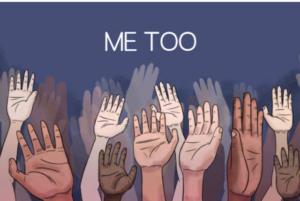 Trust is foundational to a successful team. Being able to trust that your coworkers and employees will perform to the best of their abilities enables not only more productivity but also engaged employees. The Harvard Business Review found that people who work in places with high trust levels reported 106% more energy at work, 76% more engagement, 74% less stress, 40% less burnout, 50% higher productivity and 29% more satisfaction with their lives compared to those at a low trust workplace.
Trust is foundational to a successful team. Being able to trust that your coworkers and employees will perform to the best of their abilities enables not only more productivity but also engaged employees. The Harvard Business Review found that people who work in places with high trust levels reported 106% more energy at work, 76% more engagement, 74% less stress, 40% less burnout, 50% higher productivity and 29% more satisfaction with their lives compared to those at a low trust workplace.
The report also found that low trust workplaces often mean that people have to spend time navigating office politics. There have been decades of research into all aspects of the workplace, team performance being a dominant one. One person who has researched trust and dysfunction in teams is Patrick Lencioni who wrote the book The Five Dysfunctions of a Team.
The book lists these dysfunctions as absence of trust, fear of conflict, lack of commitment, avoidance of accountability, and inattention to results. Absence of trust focuses on the lack of vulnerability based trust which leads to team members not willing to be open with teammates on things like admitting mistakes or weaknesses. Fear of conflict connects to trust as it involves team members being comfortable contradicting a teammate and debating topics. Lack of commitment happens when members’ ideas aren’t being taken into account. Avoidance of accountability is when peers don’t hold each other accountable for living up to the standards of the team. The final dysfunction is inattention to results in which individual team members are more focused on their own results than the team results. Many of these dysfunctions can be addressed by making sure psychological safety is present in the workplace.
The current definition of psychological safety was coined in 1999 by Amy Edmondson and is defined as, “the belief that one will not be punished or humiliated for speaking up with ideas, questions, concerns, or mistakes, and that the team is safe for interpersonal risk taking.” In a recent study by Yuanqin Ge, it was found that employees that felt a sense of psychological safety in their workplace could speak more openly and often, provide their opinions to help decision making in teams and feel comfortable enough to share their ideas with managers. All of these outcomes are based on trust.
How can you apply psychological safety? According to Timothy Clarke, whose model is based off Edmondson’s 1999 research, there are Four Stages of Psychological Safety which include:
- Inclusion Safety – Inclusion safety involves making sure team members feel as though that can be their most authentic selves and will be accepted for that.
- Learner Safety – This stage includes making sure the workplace is an environment where questions are not frowned upon. The workplace needs to become a space where people feel they can ask questions to learn, give and receive feedback and even make small mistakes without fear of repercussions.
- Contributor Safety – In this stage, the team should feel as though they can share their ideas without the fear of being ridiculed or embarrassed. This stage can be the most difficult stage as bringing your own ideas in front of peers can be a very vulnerable position to be in.
- Challenger Safety – In the final stage, team members should be able to question or challenge coworkers’ (include authorities’) ideas and offer suggestions to plans or ways of working through a project.
What Can You Do to Encourage Psychological Safety In Your Own Team?
- Don’t Worry about Being the “Perfect” Team
Don’t put all the emphasis on being the “perfect” team where no mistakes are made and everything is always right. It’s understandable to strive for that as a leader, but it’s not exactly feasible. All of your employees are human and humans cannot be perfect all the time, as much as we may want to be. Studies show that a perfectionist boss has negative effects on motivation, effort, and willingness to work. Let go of your perfectionism a little and allow your employees to make mistakes and learn from them. Try to avoid anger in blaming the person and instead look for ways to rectify the situation. In doing so, you not only show your employees that you trust them enough to learn from this and not do it again but also show your team that coming to you with a mistake will not result in being berated by authority.
- Encourage All Voices
Try to create a space where everyone can say what they believe needs to be included in a discussion. Remind your team that their input is appreciated and cherished. Attempt to hear people out when they are sharing, instead of dismissing them with answers like “yes, but…” or “You don’t know enough context to understand this situation.” Instead, ask them questions and invite participation in a non threatening way such as “What point of view could we be missing?” and be willing to accept criticisms. It may help to even set up meetings with a portion for playing the devil’s advocate and addressing those concerns as a group. Making sure that your employees feel as though they are being heard can encourage them to continue speaking up and bringing unique ideas and solutions to the table.
- Focus on Building a Team Culture
Build a team where no one is afraid to ask each other for help. Make it the norm that coworkers encourage each other and have that begin with you. Try to schedule times for your team to spend time together and focus on feedback and appreciation. Make sure you let your team know you appreciate them and are supporting their development personally and professionally. Do this as well as events like happy hours or fun team building activities so your employees can let loose a little. You are with these people 35+ hours a week. Knowing more about them and feeling safe around them will make working with them more enjoyable and productive.
The addition of psychological safety can do wonders for increasing trust in your team. Trust and safety go hand in hand in making sure your workplace is one that can flourish and perform to its highest standards. Applying these few examples can make huge strides towards a more productive and happy work environment for your team.
By Chloe Williams




 Several years ago diversity became diversity and inclusion with many putting emphasis on the inclusion part.
Several years ago diversity became diversity and inclusion with many putting emphasis on the inclusion part.